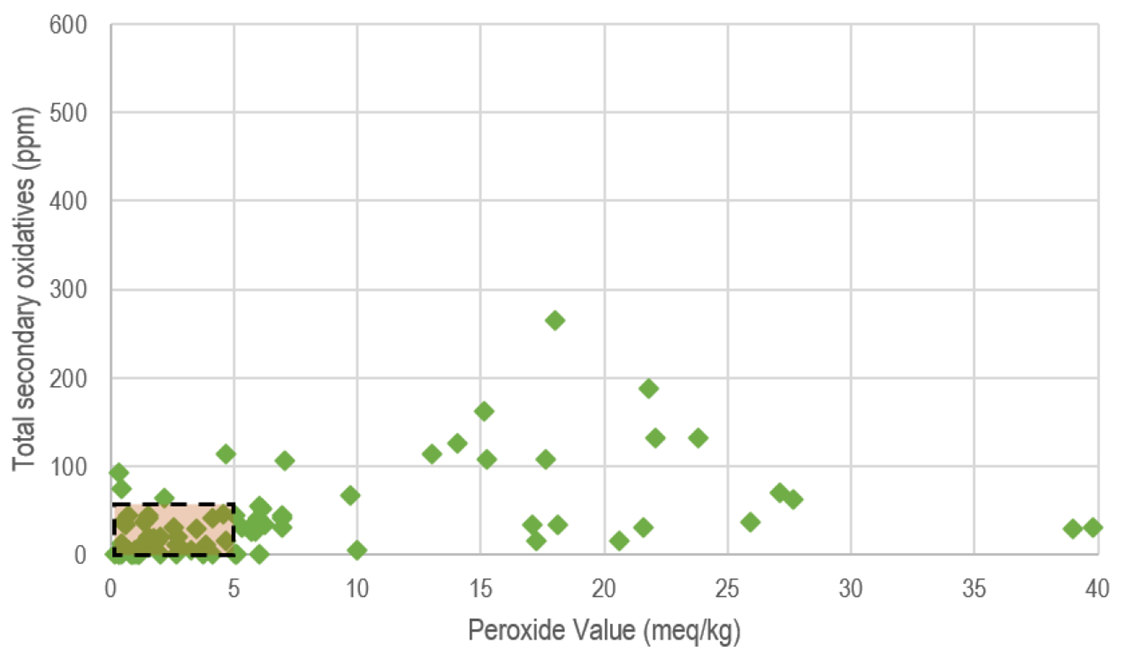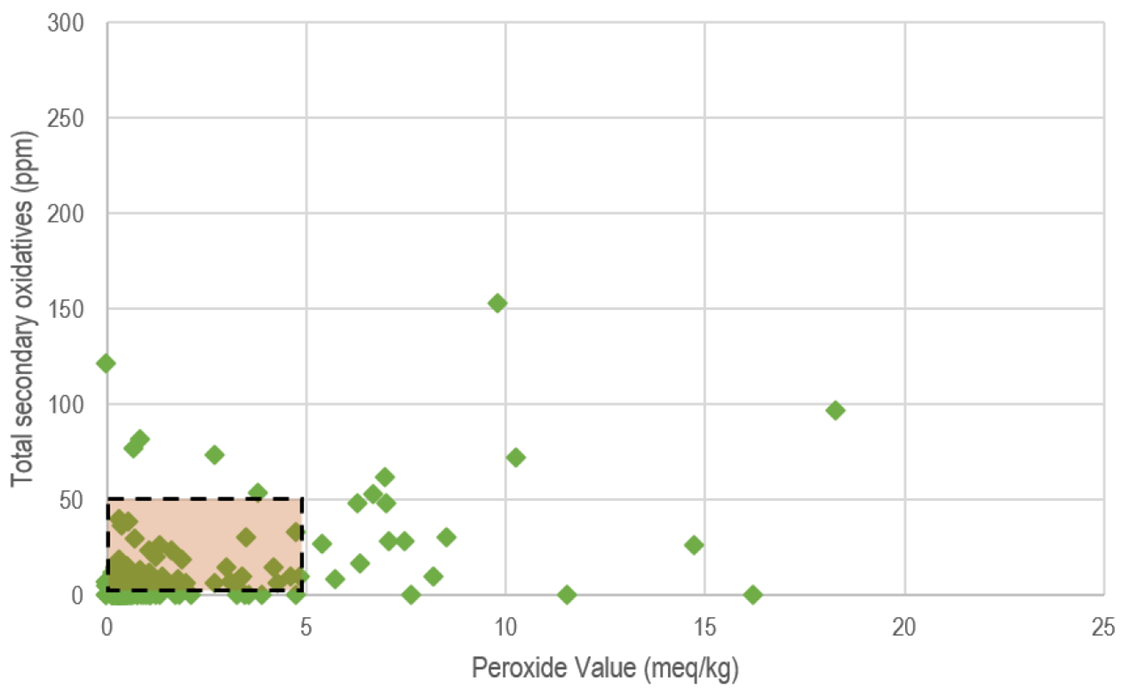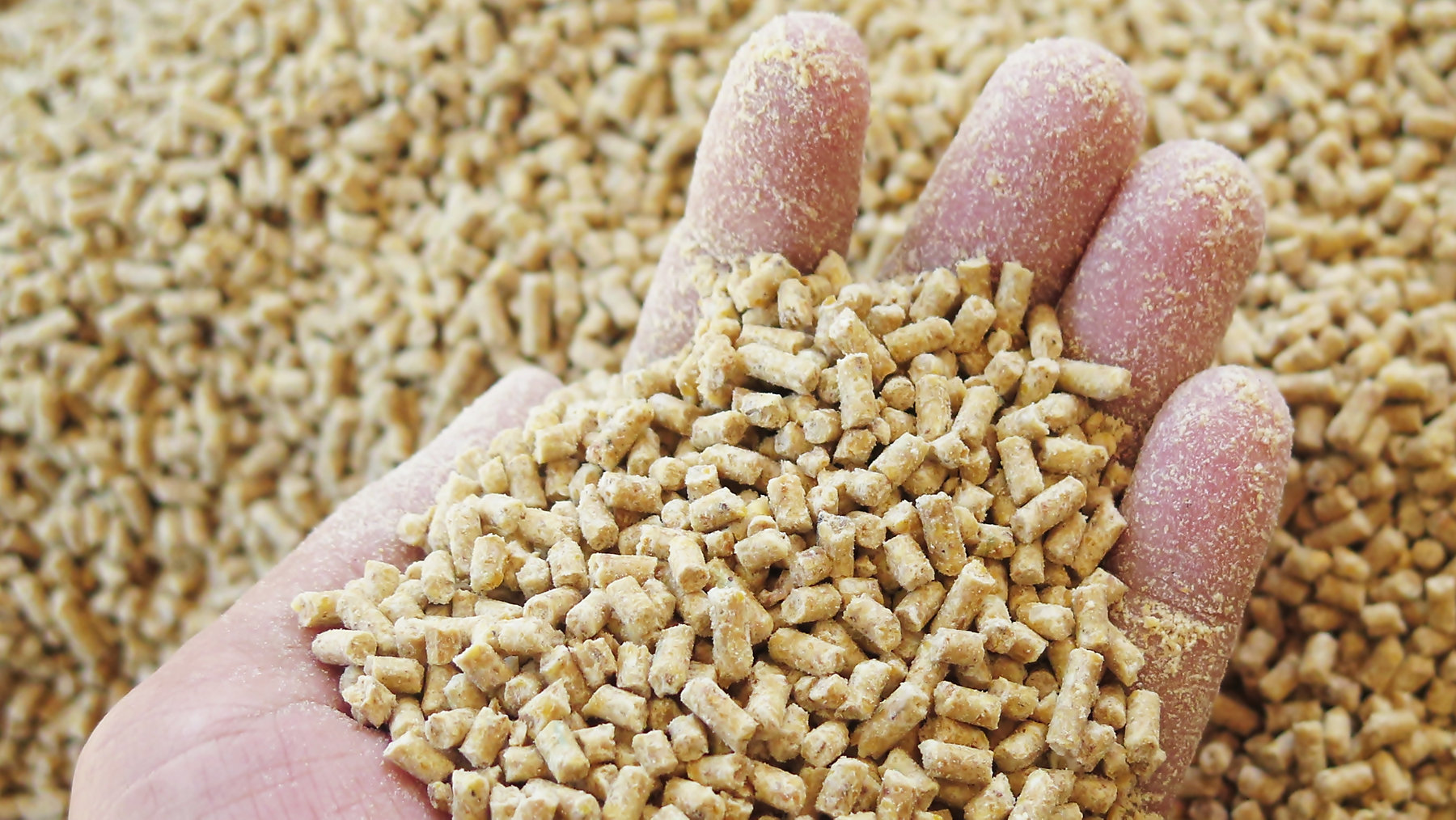Vitamin degradation is also a key issue we see with oxidized fat. Vitamins are an essential part of animal performance – maintenance, growth, reproduction and overall health. Some vitamins are more impacted by the oxidation process than others but mitigating any vitamin loss is the ultimate goal – especially given the sometimes-volatile price of vitamins on the market today.
Kemin offers its customers the ability to analyze their fat and oil samples for oxidative parameters. The results provide an estimation of both the current degree of oxidation and the potential for future oxidation – helping producers watch out for potentially negative health and performance impacts and their bottom line.
Last year alone, Kemin Customer Laboratory Services (CLS) analyzed more than 250 fat and oil samples. Parameters included peroxide value, secondary oxidatives (hexanal + 2, 4-decadienal) and oxidative stability index (OSI). The summary of the testing results for animal fats, vegetable fats and blended fats are below.
The variability of the current state of oxidation was measured as peroxide value and total secondary oxidatives (Figures 1, 2 and 3). As a general guideline, fats and oils should contain a peroxide value less than 5 milliequivalents per kilogram (meq/kg) and a total secondary oxidative value less than 50 parts per million (ppm).2 This is indicated in Figures 1, 2 and 3 by the shaded box.

Figure 1. Peroxide value and total secondary oxidative value for animal fats analyzed by Kemin CLS from January to December 2017 (n=84).3

Figure 2. Peroxide value and total secondary oxidative value for vegetable oils analyzed by Kemin CLS from January to December 2017 (n=143).3

Figure 3. Peroxide value and total secondary oxidative value for blended fats analyzed by Kemin CLS from January to December 2017 (n=39).3
As you can see, large variability in oxidative parameters has been noted in fats and oils evaluated by Kemin. So, with all this variability and the potential for irreversible oxidation, how can you avoid the aforementioned impacts and help optimize your animal performance? Antioxidants are often the key. The antioxidants stabilize fats and oils used in animal feeds but identifying the correct antioxidant for your operation is also essential. Commonly used antioxidants include:
- Butylated hydroxyanisol (BHA)
- Butylated hydroxytoluene (BHT)
- Ethoxyquin
- Propyl gallate
- Tertiary butyl hydroquinone (TBHQ)
- Tocopherols
Ultimately, to maintain animal performance and feed quality – both monitoring and protecting fat is key. Antioxidants quench free radicals to prevent oxidation and are an excellent way to protect not just your animals, but also your bottom line.
References
1Animals With an Unbelievably Amazing Sense of Taste. (2018, February 22). Retrieved on June 25, 2018, from https://animalsake.com/animals-with-amazing-sense-of-taste.
2Verleyen, T. 2010. Oxidation key issue in use of oils and fats for feed. http://www.allaboutfeed.net/article-database.
3Kemin Internal Document, 18-00054.




